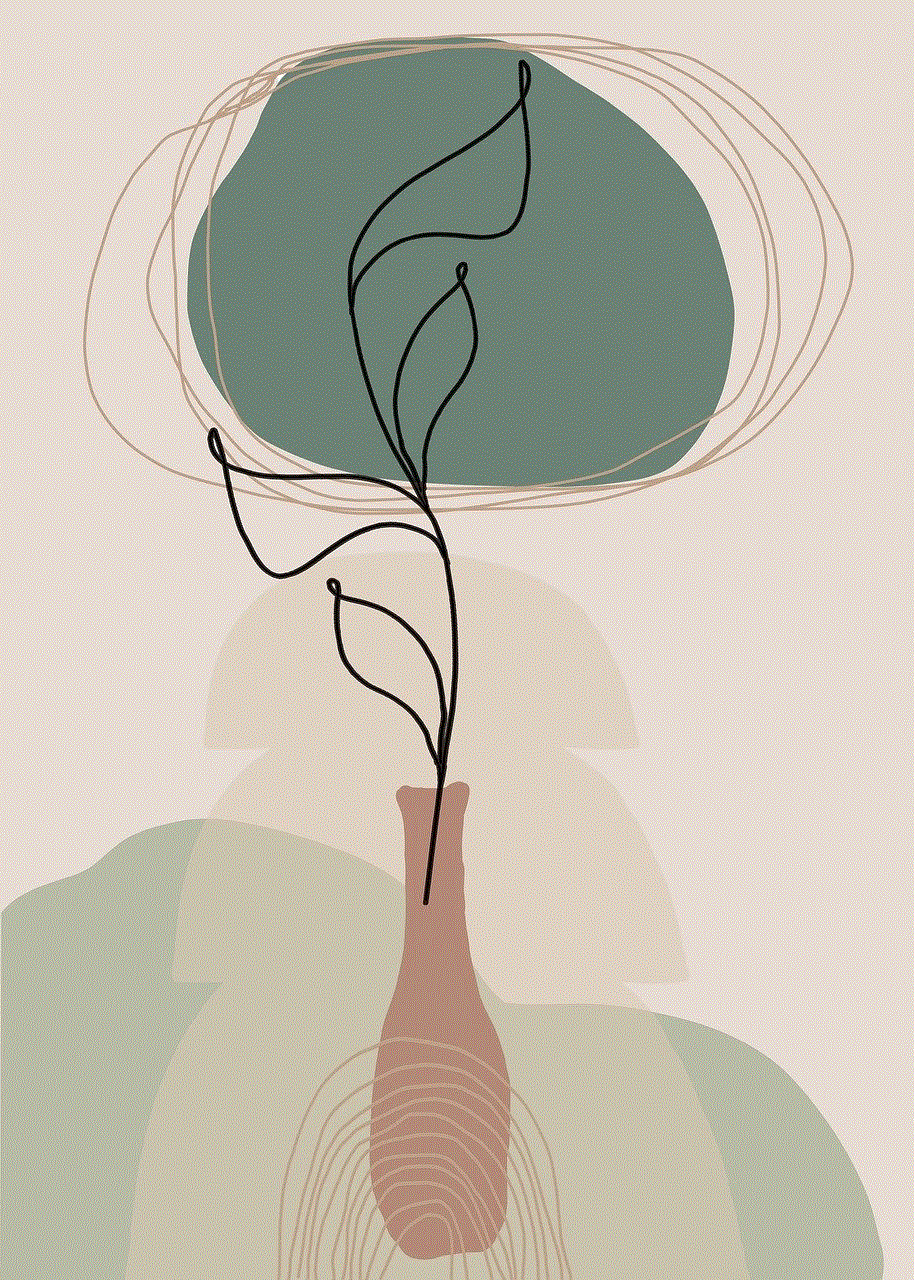how to add payment method on iphone with family sharing
Family sharing is a great feature on iPhones that allows users to share apps, music, movies, and other content with members of their family. This feature also extends to payment methods, making it easier for families to manage their purchases. In this article, we will discuss how to add a payment method on iPhone with family sharing.
First, let’s understand what family sharing is and how it works. Family sharing is a feature that allows up to six members of a family to share purchases from the App Store, iTunes Store, and Apple Books. This feature also includes sharing of Apple Music, Apple TV+, and iCloud storage. The purchases made by the family members are billed to the organizer’s account, but each family member has their own Apple ID, which allows for personalized recommendations and access to their own content.
One of the most convenient aspects of family sharing is the ability to share payment methods. This eliminates the need for each family member to have their own credit card or payment method linked to their account. It also makes it easier for the organizer to keep track of all the purchases made by the family. Let’s now dive into the steps to add a payment method on iPhone with family sharing.
Step 1: Set up Family Sharing
Before you can add a payment method, you need to set up family sharing on your iPhone. To do this, go to Settings, tap on your name, and then select Set Up Family Sharing. Follow the instructions to set up the family group. You will need to invite family members to join the group and confirm their accounts. Once the family sharing is set up, you can proceed to add a payment method.
Step 2: Open the App Store or iTunes Store
To add a payment method, you need to open either the App Store or iTunes Store on your iPhone. You can do this by tapping on the respective app icon on your home screen.
Step 3: Tap on your Profile Picture
Once the App Store or iTunes Store is open, tap on your profile picture or name at the top of the screen. This will take you to your account page.
Step 4: Select Payment & Shipping
On your account page, scroll down and select Payment & Shipping. This will take you to a page where you can manage your payment methods.
Step 5: Tap on Add Payment Method
On the Payment & Shipping page, tap on the option to Add Payment Method. This will open a new page where you can add a payment method.
Step 6: Choose the Payment Method
On the Add Payment Method page, you will see a list of available payment methods. These can include credit or debit cards, PayPal, Apple Pay, and more. Choose the payment method you want to add.
Step 7: Enter Payment Details
Once you have selected the payment method, you will need to enter the payment details. If you are adding a credit or debit card, you will need to enter the card number, expiration date, and security code. For other payment methods, you may need to sign in to your account to confirm the payment method.
Step 8: Select the Family Member
After entering the payment details, you will see an option to select the family member you want to share the payment method with. You can choose to share the payment method with all family members or select specific members.
Step 9: Agree to Share Payment Method
Once you have selected the family member(s), you will need to agree to share the payment method. This ensures that all purchases made by the family members using the shared payment method will be billed to the organizer’s account.
Step 10: Confirm the Payment Method
After agreeing to share the payment method, you will be asked to confirm the changes. Review the details and tap on Confirm to add the payment method to your account.
Congratulations, you have successfully added a payment method to your iPhone with family sharing. You can now make purchases on the App Store, iTunes Store, and Apple Books using the shared payment method. You can also manage your payment methods by going to the Payment & Shipping page and selecting the payment method you want to edit or remove.
Tips for Managing Payment Methods on Family Sharing
Now that you know how to add a payment method on iPhone with family sharing, here are some tips to help you manage your payment methods effectively:
1. Set up an allowance for family members: As the organizer, you can set up an allowance for each family member to control their spending on purchases. This can be done by going to Settings, tapping on your name, and selecting Family Sharing. From there, you can tap on your family member’s name and set an allowance limit.
2. Enable Ask to Buy: Ask to Buy is a feature that allows parents to approve or decline purchases made by their children through family sharing. This can be enabled by going to Settings, tapping on your name, and selecting Family Sharing. From there, tap on your child’s name and enable Ask to Buy.
3. Remove old or unused payment methods: It’s essential to regularly review and remove old or unused payment methods to avoid any unauthorized purchases. You can do this by going to the Payment & Shipping page and swiping left on the payment method you want to remove.
4. Keep track of purchases: The organizer can keep track of all the purchases made by family members by going to the Purchases page on the App Store or iTunes Store. This page shows all the purchases made by family members, and you can tap on any purchase to see the details.
Family sharing is a fantastic feature that allows families to share and manage purchases on iPhones seamlessly. By following the steps mentioned above, you can easily add a payment method and ensure that all purchases made by family members are billed to the organizer’s account. So, go ahead and try out this feature to make managing purchases easier for your family.
aplicacion para recuperar mensajes borrados



En la era digital en la que vivimos, es común que nos comuniquemos a través de mensajes de texto, correos electrónicos y aplicaciones de mensajería instantánea. Estos medios de comunicación nos permiten estar en contacto con amigos, familiares y colegas de manera rápida y eficiente. Sin embargo, también pueden ser una fuente de estrés y preocupación cuando borramos accidentalmente un mensaje importante o nos damos cuenta de que necesitamos recuperar uno que ya habíamos eliminado.
Afortunadamente, existen aplicaciones diseñadas específicamente para ayudarnos a recuperar mensajes borrados en nuestro dispositivo móvil o computadora. En este artículo, exploraremos algunas de estas aplicaciones y cómo pueden ayudarnos a recuperar mensajes importantes en caso de que los hayamos eliminado por error.
Antes de sumergirnos en las aplicaciones de recuperación de mensajes, es importante entender cómo funcionan y qué tipo de mensajes pueden ser recuperados. En términos generales, los mensajes eliminados pueden ser recuperados siempre y cuando no hayan sido sobrescritos por nuevos datos. Esto significa que si eliminamos un mensaje y no lo reemplazamos con otro, existe una alta probabilidad de que podamos recuperarlo utilizando alguna de las aplicaciones que mencionaremos a continuación.
La primera aplicación que recomendamos para recuperar mensajes borrados es Dr. Fone, desarrollada por Wondershare. Esta aplicación está disponible tanto para dispositivos iOS como Android y es una de las más populares en el mercado. Dr. Fone cuenta con una función de recuperación de datos que nos permite escanear nuestro dispositivo en busca de mensajes eliminados y restaurarlos de manera sencilla.
Para utilizar Dr. Fone, debemos descargar e instalar la aplicación en nuestro dispositivo. Una vez instalada, podemos conectar nuestro dispositivo a la computadora y seleccionar la opción de recuperar mensajes eliminados. La aplicación nos permitirá escanear nuestro dispositivo en busca de mensajes eliminados, y una vez finalizado el escaneo, podremos ver una lista de los mensajes que pueden ser recuperados. Seleccionamos los mensajes que deseamos restaurar y la aplicación los recuperará en nuestro dispositivo.
Otra aplicación popular para recuperar mensajes borrados es EaseUS MobiSaver. Esta aplicación también está disponible para dispositivos iOS y Android y cuenta con una interfaz amigable y sencilla de utilizar. Al igual que Dr. Fone, EaseUS MobiSaver nos permite escanear nuestro dispositivo en busca de mensajes eliminados y restaurarlos en pocos pasos.
Una de las ventajas de EaseUS MobiSaver es que también nos permite recuperar mensajes eliminados de aplicaciones de mensajería como WhatsApp, Viber y Line, además de los mensajes de texto y correos electrónicos. Esto la convierte en una opción ideal para aquellos que utilizan diferentes aplicaciones de mensajería en su dispositivo.
Además de estas aplicaciones, también existen opciones gratuitas para recuperar mensajes borrados. Una de ellas es DiskDigger, una aplicación disponible para dispositivos Android que nos permite escanear nuestro dispositivo en busca de mensajes eliminados y restaurarlos de manera sencilla. Sin embargo, es importante tener en cuenta que la versión gratuita de DiskDigger solo nos permite recuperar un número limitado de mensajes, y para recuperar una cantidad mayor debemos adquirir la versión premium.
Otra opción gratuita es Recuva, una aplicación disponible para computadoras con sistema operativo Windows. Al igual que DiskDigger, Recuva nos permite escanear nuestro dispositivo en busca de mensajes eliminados y restaurarlos de manera sencilla. Sin embargo, su uso está limitado a dispositivos con sistema operativo Windows, lo que puede ser una desventaja para aquellos que utilizan dispositivos con otros sistemas operativos.
Además de estas aplicaciones, también es importante mencionar la importancia de realizar copias de seguridad periódicas de nuestro dispositivo. En caso de que eliminemos un mensaje importante y no podamos recuperarlo utilizando alguna de las aplicaciones mencionadas anteriormente, una copia de seguridad nos permitirá restaurar todos nuestros datos, incluyendo mensajes eliminados.
Otra opción para recuperar mensajes borrados es utilizar la función de restaurar mensajes que algunas aplicaciones de mensajería tienen incorporada. Por ejemplo, WhatsApp nos permite restaurar mensajes eliminados si hemos realizado una copia de seguridad reciente. Para hacerlo, debemos desinstalar y reinstalar la aplicación y, al abrir nuevamente la aplicación, se nos dará la opción de restaurar mensajes desde una copia de seguridad.
En resumen, en caso de que hayamos eliminado accidentalmente un mensaje importante, existen diferentes opciones para recuperarlo. Desde aplicaciones de pago hasta opciones gratuitas, podemos elegir la que mejor se adapte a nuestras necesidades y dispositivo. Sin embargo, es importante tener en cuenta que la recuperación de mensajes eliminados no siempre es exitosa, por lo que es fundamental realizar copias de seguridad periódicas de nuestros dispositivos para evitar la pérdida de datos importantes.
En conclusión, en la era digital en la que vivimos, donde la comunicación a través de mensajes de texto y aplicaciones de mensajería es cada vez más común, es importante contar con herramientas que nos ayuden a recuperar mensajes borrados en caso de que los necesitemos nuevamente. Las aplicaciones mencionadas en este artículo son solo algunas de las opciones disponibles en el mercado, por lo que es recomendable investigar y probar diferentes opciones para encontrar la que mejor se adapte a nuestras necesidades. Además, es fundamental realizar copias de seguridad periódicas para evitar la pérdida de datos importantes en caso de que no podamos recuperar los mensajes eliminados.
can someone tell if they are blocked



Being blocked by someone can be a confusing and stressful experience. Whether it’s on social media, messaging apps, or in real life, being blocked can leave us wondering if the person is intentionally avoiding us or if there is another reason behind it. In this article, we will explore the signs that indicate you have been blocked and what you can do in this situation.
Firstly, let’s understand what it means to be blocked. Blocking someone means cutting off all forms of communication with them. This can be done on various platforms such as facebook -parental-controls-guide”>Facebook , Instagram , WhatsApp, or even on your phone. When someone blocks you, you will no longer be able to see their profile, send them messages, or call them. It’s like being invisible to that person.
So, how can you tell if you have been blocked? The most obvious sign is that you will no longer be able to see the person’s profile or any updates they post. If you try to search for their profile, it will not show up. On social media, you may see a message saying “this profile is not available” or “this account has been deactivated.” This is a clear indication that you have been blocked.
Another sign is that you will no longer be able to send the person messages. On messaging apps like WhatsApp, the messages you send to the person will only show one checkmark instead of two. This means that the message has not been delivered to the person’s phone. If you try to call the person, it will either ring endlessly or go straight to voicemail. These are strong indications that the person has blocked you .
On social media, you may also notice that you have been unfriended or unfollowed by the person. This can be a subtle way of blocking someone without actually blocking them. If you can’t find the person on your friend’s list, it’s a clear sign that they have unfriended you. On Instagram, you won’t be able to see their posts on your feed anymore.
Another way to tell if you have been blocked is by checking if the person’s profile picture has changed. On WhatsApp, the profile picture of a blocked contact will not update, and you will still see the old one. On social media, if the person has changed their profile picture, you won’t be able to see the new one. This is because you are blocked, and the person’s updates are invisible to you.
If you are still unsure if you have been blocked, you can try to reach out to the person through a mutual friend. Ask the mutual friend to check if they can see the person’s profile or if they can contact them. If the mutual friend is able to communicate with the person, then it’s likely that you have been blocked.
Now that we know the signs of being blocked, let’s explore the reasons why someone may choose to block you. The most common reason is that the person wants to avoid you or end the relationship. This can happen in friendships, romantic relationships, or even professional relationships. The person may feel that there is no way to resolve the issues between you, and blocking you is the only solution.
Another reason could be that the person is going through a difficult time and needs space. Blocking you may be a way for them to disconnect from the world and focus on themselves. They may not have the energy or desire to interact with anyone, including you. In this case, the person may unblock you once they have dealt with their personal issues.
There is also a possibility that the person has blocked you accidentally. With social media, it’s easy to unintentionally block someone while scrolling through your feed. If you have not had any conflicts with the person, it’s worth reaching out to them and asking if they have accidentally blocked you.
Now that we have explored the signs and reasons for being blocked, let’s discuss what you can do in this situation. The first and most important thing is to respect the person’s decision to block you. You may feel hurt or confused, but it’s essential to give the person the space they need. Constantly trying to contact them or creating new accounts to reach out to them will only make the situation worse.
If you have been blocked on social media, it’s a good idea to take a break from that platform. Seeing the person’s updates or trying to find ways to view their profile will only prolong your healing process. Take this time to focus on yourself and your relationships with others. It’s crucial to not let being blocked affect your other relationships.
It’s also important to reflect on why the person may have chosen to block you. Was there a misunderstanding or a conflict that was never resolved? If yes, it’s worth reaching out to the person and apologizing for your actions. However, if you have been blocked without any apparent reason, it’s best to let it go and move on.
In some cases, you may feel the need to confront the person and ask why they have blocked you. However, this is not always a good idea. If the person has blocked you, it’s evident that they don’t want to communicate with you. Confronting them may only lead to further conflict and hurt feelings. It’s best to respect their decision and focus on your own well-being.



In conclusion, being blocked by someone can be a difficult and confusing experience. However, it’s essential to respect the person’s decision and give them the space they need. If you have been blocked, it’s important to take this time to reflect on yourself and your relationships. It’s also crucial to not let this experience affect your other relationships. Remember, if the person has blocked you, it’s time to move on and focus on your own well-being.